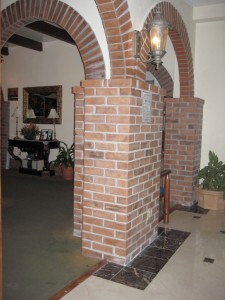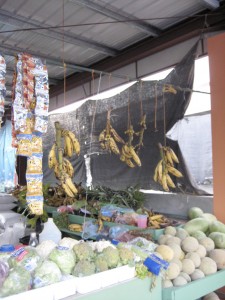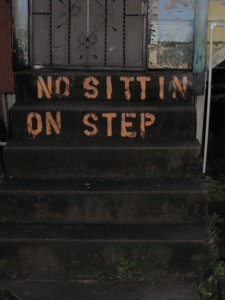Archive for the ‘Context and Domains’ Category
Twitter SMS Service Stopped
Twitter has stopped their SMS service in all but the US, India, and Canada (via White African). The service was stopped due to the cost to the company.
Charlie Brown: “Open Sourcing Social Solutions”
This paper argues that when more people can work to generate and carry out social innovation, they are able to be more effective than individuals working on their own. Ashoka attempts to facilitate this with Changemakers, an online competition narrowed by ‘the public’, but ultimately decided on by a panel of experts.
In the paper they over-extend the ideas of ‘open-souce’ collaboration and ‘crowd-sourcing’ instead of focusing on what they actually do well, which is create a collaborative environment which encourages innovation through funding and knowledge of similar projects. If they want to extend an internet term it seems more appropriate to call their approach ’social networking.’ They are creating a site where like-minded people people can connect in a way that they could not in person.
Beyond all of this, the most interesting part of the paper for me in the ‘Mosaic of Solutions’. An expert from Ashoka has pooled together common obstacles in related innovations giving guidance and provoking thought from new innovators. They provide precedents and solutions to particular problems which can be extended and changed by new innovators. This is a very valuable resource for those beginning to create answers to similar problems which have been addressed before. The more widely available these charts were, the more useful they could be to such people.
“Open Sourcing Social Solutions” from innovations summer 2007
Mobile Phone Telemedicine Interview
 In many places, such India, Bangladesh, and where I am in Belize, there aren’t enough doctors for all of the patients that need care, especially in rural areas. MobileActive.org talked with Krishnan Ganapathy about telemedicine via mobile phone networks.
In many places, such India, Bangladesh, and where I am in Belize, there aren’t enough doctors for all of the patients that need care, especially in rural areas. MobileActive.org talked with Krishnan Ganapathy about telemedicine via mobile phone networks.
Currently, a paramedic or nurse must take the readings, but a device called mDoc, “specialized mobile phone with lots of added features“, is in the works which will allow laypeople to easily and noninvasive take readings which can be transmitted to doctors.
We realized that in India it is possible to transfer an ECG and to listen to heartbeats via a stethoscope with the doctor and the patient several thousand miles away from each other using purely wireless technology on mobile phones. The greatest part of this is that villages in India which still do not have a landline, which still do not have a wired phone, are directly going into the 21st century by using wireless technology.
I would like every single human being on this planet to know within three years from now that it is possible to get health care through a mobile phone…. People will get interested, a business case will develop, and it will become a reality.
“Behavioral Inference Across Cultures: Using Telephones as a Cultural Lens”
Nathan Eagle’s paper “Behavioral Inference Across Cultures: Using Telephones as a Cultural Lens“, to appear in IEEE Intelligent systems, August 2008, continues to explain his thoughts into the way data-mining mobile phone usage can be used to discover cultural trends. He specifically mentions studying the impacts of moving from rural to urban environments, identifying types of students at MIT, and investigating the social hierarchy or friend structure of individuals.
He does mention that such data is often collected without the consent of consumers, but that with proper effort on the part of the researcher, individual privacy can be maintained, allowing researchers to cull through data exposing cultural trends.
“Inside Nairobi, the Next Palo Alto?”
The New York Times had an article about the emerging environment of mobile phone innovation in Nairobi a few days ago: “Inside Nairobi, the Next Palo Alto?“. I’ve read elsewhere that the article came out of the journalist attending BarCamp Nairobi, which I mentioned in a previous post.
It also mentions Google’s Nairobi office. Google must certainly be interested in Kenya, and Africa, as an enormous future market for services, or they wouldn’t be investing in infrastructure and research there.
Google and the other software developers in Nairobi are primarily focused on expanding what it is to interact with the internet. In emerging markets where mobile phones will vastly outnumber traditional computers for the foreseeable future, the mobile phone has the real possibility of being the most often used way to interface with the web on Earth.
The Question Box

The Question Box is a telephone intercom system that people can use to call an operator who can look things up for the user on the internet. It’s a free service available in India, and ultimately people will be able to call in to the system from their mobile phones.
This is great as it expands the idea of what connection to the internet is. To access the system and the internet, you only need to know how to use a mobile phone or, even more simply, how to push a button. To use the Question Box would require a certain amount of trust of the person on the other end of the line. Question Box is supported built by Open Mind, a non-prof, so I wonder how the system is financially supported.
via Appfrica
Design Missteps
 The main brick column here is about 6 feet tall. I assumed that the top of it was closed off, so I set my wallet and two sets of keys on it, which promptly fell into a crevice. It took the hotel staff about 30 minutes to help me fish out my belongings with wire hangers. The builder of the building happened to be eating dinner at a table about 10 feet from the column during the event.
The main brick column here is about 6 feet tall. I assumed that the top of it was closed off, so I set my wallet and two sets of keys on it, which promptly fell into a crevice. It took the hotel staff about 30 minutes to help me fish out my belongings with wire hangers. The builder of the building happened to be eating dinner at a table about 10 feet from the column during the event.
–
The San Ignacio market has about 10 vendors on weekdays, but on Saturdays the market area is flooded with a huge number of merchants. In the last year, a new, large structure was built for the market to house the everyday vendors and a new concrete slab was laid for the weekend merchants to set up temporary tents on.

 I think it’s great that there is investment being put into infrastructure for something so obviously important to the local economy, but I think there are a few major oversights in the design of the site. The most major one is that the majority of the vendors are on a north-south axis and the east to west brightly shining sun blasts in on the vendors and their products essentially all day every day. To deal with this, all of the vendors have strung up tarps or sheets to block out the sun.
I think it’s great that there is investment being put into infrastructure for something so obviously important to the local economy, but I think there are a few major oversights in the design of the site. The most major one is that the majority of the vendors are on a north-south axis and the east to west brightly shining sun blasts in on the vendors and their products essentially all day every day. To deal with this, all of the vendors have strung up tarps or sheets to block out the sun.
Additionally, the design of the stalls just doesn’t seem to consider what will happen in them. Every stall has added a system of ropes and pipes to hang bananas and other good off for selling. They are making the most of their space, but the design of the stall could have anticipated and assisted in this and other produce selling needs.
Also:
BarCamp Nairobi
BarCamp Nairobi was a “unconference” held 21 June 2008, where bloggers, programmers, and other techy folk in and around Nairobi met up to “share and learn in an open environment”.
White African has a few videos from the event.
O’reilly had a survey carried out at BarCamp with the following results:


“Anthropology’s Technology-driven Renaissance”
Anthropology’s Technology-driven Renaissance, a article for PC World by Ken Banks of kiwanja.net, emphasizes the importance of observation and understanding of human behavior within a particular context (anthropology) in development design. This importance certainly extends to design in general.
This is the method I’m trying to employ in my process at the moment. In talking to Colleen, she recommended that I think of mapping and observation, esentially anthropological research and analysis, as prototypes and to not be so concerned with my end product. I’m going to try and actively pursue such activities in my remaining time in Belize.
“In order for the mobile phone to reach its full potential, we’re going to need to understand what people in developing countries need from their mobile devices and how they can be applied in a way that positively impacts their lives. Sounds like the perfect job for an anthropologist to me.”
txteagle

Another Nathan Eagle project is txteagle. txteagle leverages the power of vast numbers of SMS users, paying them small fees for creating an ‘artifical artifical intellegence’. The system can help check for search relevancy, translation accuracy, and blog sentiment.


